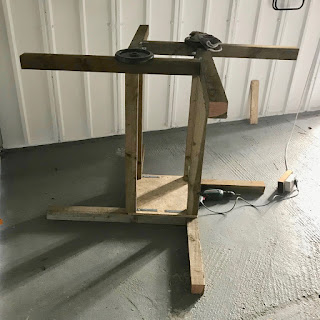There are days you don't feel like doing any of this, but the years have taught me that what distinguishes the entrepreneur is a readiness to do it on the days when you're not inclined.
All of this 'fitting' the drone to my waistline could probably have been made a lot easier had I managed to get to Manchester University recently for a 3-D body-scan, when traffic dictated otherwise. As it happens it has not been overly tasking and adds a 'hand-built' touch to the prototype.
There's a shoe-shop in London that keeps personal shoe-lasts for the rich and famous, in order that they can wear bespoke and made-to-fit footwear. Kind of ironic here that I am putting together what is effectively a bespoke flying machine. If you're a potential investor, don't let that worry you... in a digital world everything is bespoke in one way or another.
What is likely to happen is that you will order a chassis for your drone on which a digital 'slice' of your torso at around elbow-height will be superimposed on a stock CNC outline.
Something like the above, in fact: in a quarter-inch ply it forms a template for my own body.
Shows too that the requisite shape is not what I had imagined. The final outline has become symmetrical, which from a manufacturing and an aesthetic point of view is ideal. The width is precisely 33 centimetres (or 13 inches if you prefer) and the depth 23 (or 9).
Compared to the original outline drafted yesterday, it has been 'taken in' by a couple of inches around the waist. In fact it is largely wedged in place by my beer-gut, which will need to go in due time.
And in order to slip it on like a pair of trousers it has to be stepped into sideways, and then rotated as it moves up toward the hips. There's a lot unique about this project, and this will be among my favourites.
I've sourced a local sheet-metal retailer who can cut both the outline of the drone itself (to be 45cm or 18in square) along with the cut-out. It looks like a 2mm sheet will suffice, but in accordance with my 'belt-and-braces' build philosophy for the prototype, I shall doubtless go for the 3mm at the end of the day.
Nonetheless the deeper I get into this the more practical it looks, and the greater the chances of actual retailing these flying machines in kit form.
The world has changed since I started prototyping. Before the internet, sourcing materials was a hit-and-miss affair which depended on word of mouth and the 'Yellow Pages'.
What, my son would say, are they?














